Graveyards are quiet, peaceful places. Left alone over time, many have become secluded sanctuaries where plant and animal life can thrive. Explore your local cemetery and see what you can find living among the dead.
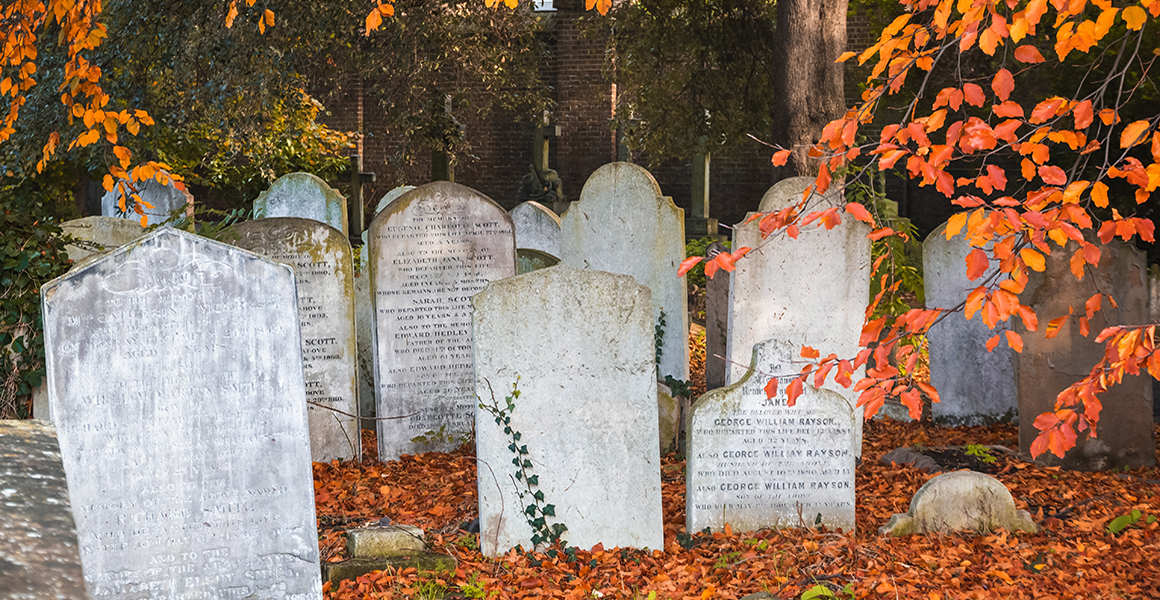
In our cities and towns, cemeteries are a hidden world of biodiversity. © I Wei Huang/ Shutterstock
An urban refuge for biodiversity
Cemeteries are not only spaces for us to explore and enjoy, they're also sanctuaries for wildlife. In an old cemetery, the graves, stone walls, shrubs and hedges provide plenty of nooks for wildlife to hide, old trees offer places for birds and bats to nest and undisturbed areas allow plants to grow.
Graveyards are so successful at housing wildlife that in London's Tower Hamlets Cemetery, a local group found 1,111 different species living within its walls. More than 450 different species of beetle alone have been spotted among its graves.
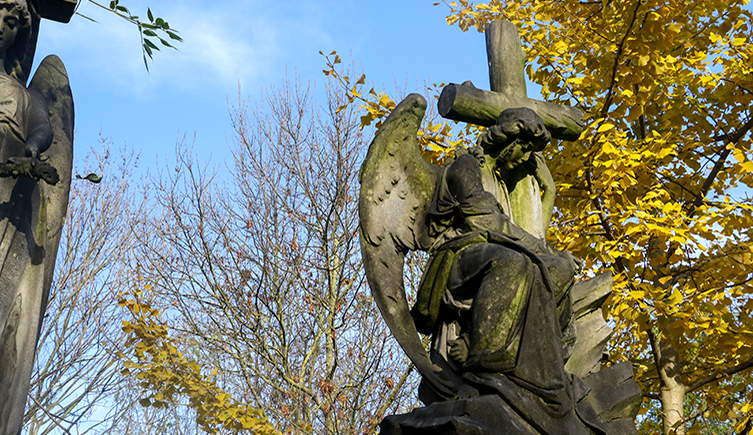
Cemeteries can be a valuable green space for humans as well as a haven for plants and animals. © Hanging Bear Media/ Shutterstock
Swapping caves for crypts
In the cold, dark corners of the Victorian vaults in Highgate Cemetery London, lives a rare spider. Having found itself this safe, quiet urban refuge, the orb-weaving cave spider Meta bourneti is flourishing.
Given that this spider only lives in dark places big enough for it to weave its large orb web, it's no surprise that it finds a perfect home in the cemetery's roomy, pitch-black, sealed vaults. These vaults are a great substitute for the caves and tree hollows this species usually inhabits.
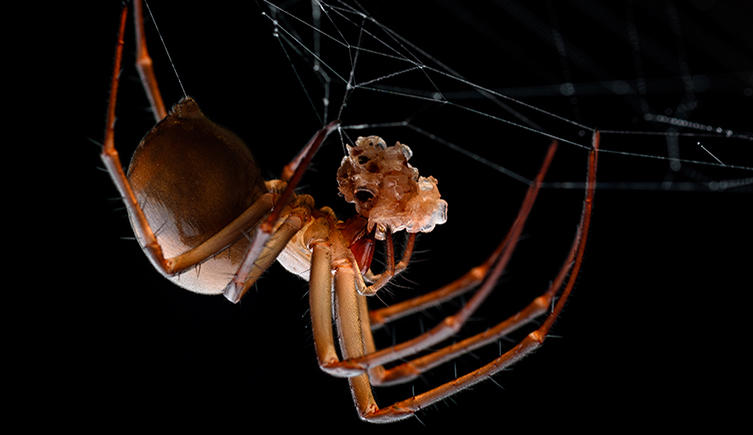
An orb-weaving cave spider lives in dark places. © Pedro Luna/ Shutterstock
In the UK, this blind arachnid is scarce, having only really been recorded in southern England, with just one additional record from Wales. Dr Sérgio Henriques, a spider researcher who's studied the cemetery spiders, remarks, 'The Highgate population of Meta bourneti is reproducing, growing and appears to be thriving. The population is therefore considered to be remarkably healthy from a conservation standpoint.'
Museum researchers recently collected some of the orb-weaving cave spiders from Highgate Cemetery as part of our Darwin Tree of Life project to record and store the genome of every species in the UK. In addition to Meta bourneti, a survey found a further 84 species of spider in the cemetery, including lace web spiders, money spiders and daddy long legs spiders.
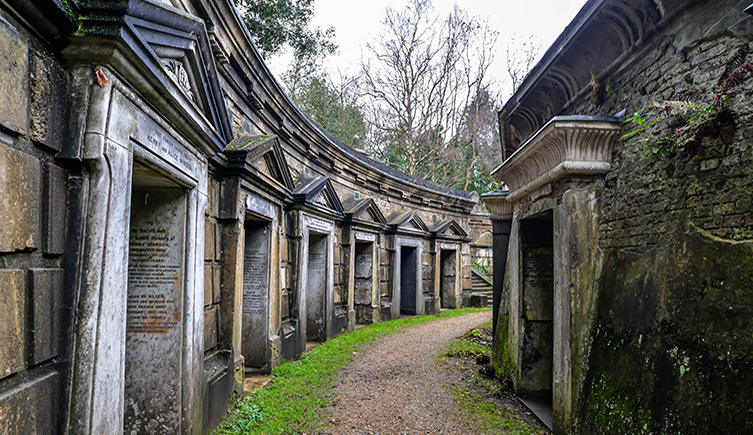
Sealed vaults in Egyptian Avenue in Highgate Cemetery, where the rare orb-weaving cave spider Meta bourneti can be found. This Victorian graveyard is also home to a whole host of bird species, including the cuckoo, spotted flycatcher and linnet, as well as skylarks and willow warblers, which aren't usually found in urban settings. These species are on the Red or Amber List for UK birds and their numbers are declining, so having places like Highgate that support them is vital for their survival. © Olivier Guiberteau/ Shutterstock
Bats in the beams
The Bats in Churches project has found that between 60-90% of all historic churches in England have bat roosts. Churches have been home to bats for centuries. These historic buildings provide not only safe flight spaces in the surrounding churchyard, but also places for bats to roost and hibernate.
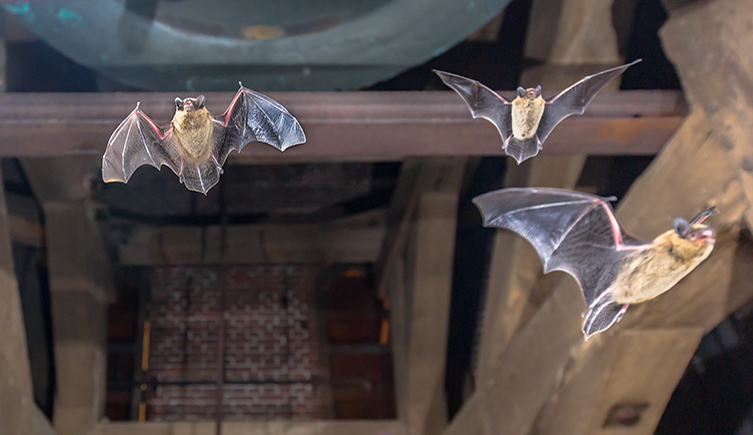
Pipistrelle bats, Pipistrellus pipistrellus, fly out of their church roost. © Rudmer Zwerver/ Shutterstock
Churchyards offer up a plentiful and important supply of insects for bats to feast on. Species such as the fast-flying, agile pipistrelle will emerge at dusk to feed for a couple of hours, catching its fill of small insects, including moths and gnats, before returning to roost. A single pipistrelle can eat up to 3,000 gnats a night, so having an abundance of small insects nearby is important for supporting a healthy bat colony.
Bat researchers in Cornwall recently observed more than 300 greater horseshoe bats emerging from a church outbuilding. The greater horseshoe bat is rare in the UK, so places like this are vital for the species' survival.
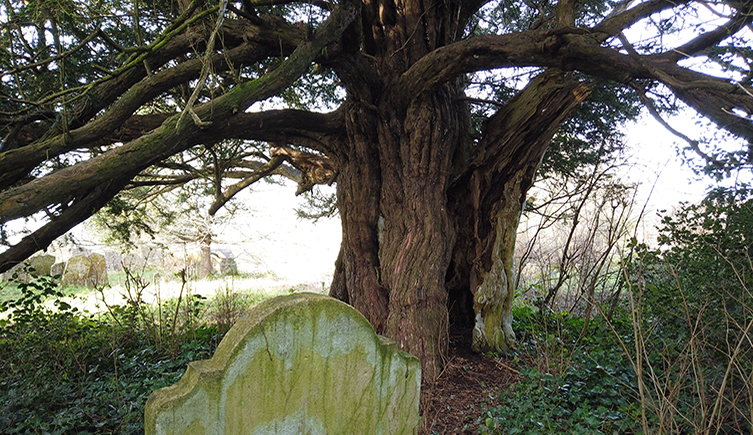
An ancient yew tree in a cemetery in Hampshire, UK. The tree has lots of nooks and crannies, which are great for wildlife. © Houston Coley/ Shutterstock
From bough to bow, ancient yews
A recent study found there are more large-girth, individual yew trees inside churchyards than anywhere else. The 1,855 individual yew trees growing in churchyards make up 67% of all the recorded large-girth yew trees in England, Scotland and Wales.
Yews have been planted in graveyards for thousands of years, though no one really knows why. A label on one of the specimens in our herbarium collection suggests they might have been planted because historically their wood was used to make bows for archery. It also notes that they might have been planted in churchyards because their branches were used in the Palm Sunday Procession.
Other historical records propose these gnarled trees could have been used as dwellings by saints or monks in the sixth to seventh centuries and that even further back the Celts might have used them in their rituals around death.
Whatever the reasons why they were planted, many of these ancient yews still survive today. This species is slow growing and many in the UK are more than 1,000 years old. Some of those in our graveyards are thought to be 3,000 years old or possibly even older.
These ancient individuals are not only important homes for wildlife, with their hollows and crevices providing a generous habitat for birds, spiders, insects and small invertebrates, they're also vital for establishing the next generation of yews. Encased in a fleshy red fruit, the yew seed, while toxic for humans, is a tasty treat for birds and squirrels, who eat them and then poop them out in new places.
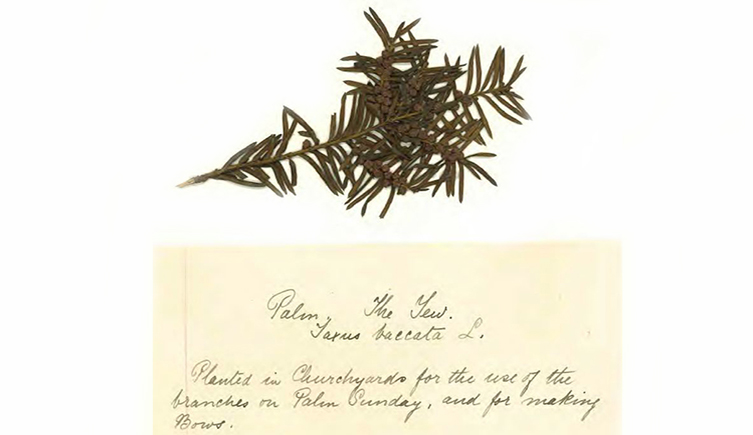
A yew tree specimen stored in our herbarium with a label that reads 'Palm. The Yew. Taxus baccata. Planted in churchyards for the use of the branches on Palm Sunday and for making bows'. The specimen was probably collected and labelled in the early 1900s.
Only as old as your last grave
With their array of rock surfaces and different aspects, gravestones provide a diversity of places for mosses and lichens to grow. Gravestones not only provide a stable surface, they also provide a date, helping researchers to judge the age of the lichen. The British Lichen Society say that lichen growing on graves can be as old as the grave itself.
Rectory Lane Cemetery in Hertfordshire has recorded 70 different types of lichen on its graves.
Dr Gothamie Weerakoon, one of our lichen researchers says, 'Graveyards aren't generally treated with herbicides or other agricultural chemicals, so they'll have more lichen and mosses than surrounding areas that might be dosed with these chemicals.'
Mosses and lichens play an important role in ecosystems. By soaking up water and acting like an insulation layer, mosses keep the ground around them damp and the ground or rock underneath them cool, which can be helpful for plants. Mosses and lichens also provide nesting material for birds and create microhabitats crucial for a variety of organisms. They create sheltered places for insects to live in, lay their eggs and find food.
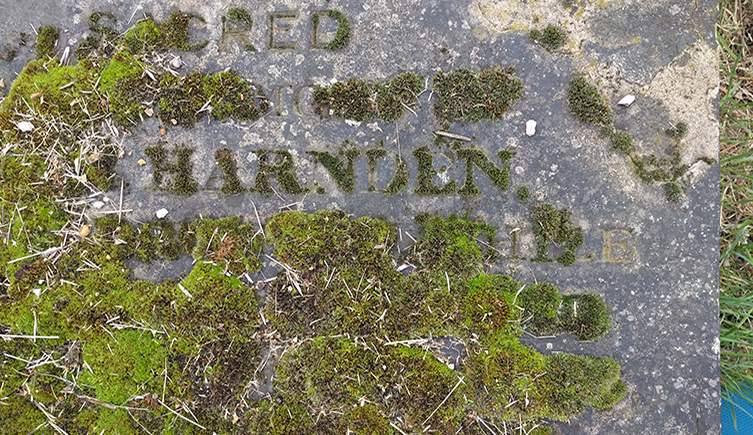
Moss grows into the letters on a grave in Brompton Cemetery, London. © John Cummings (CC BY-SA 4.0) via Wikimedia Commons

British wildlife
Find out about the plants and animals that make the UK home.
Don't miss a thing
Receive email updates about our news, science, exhibitions, events, products, services and fundraising activities. We may occasionally include third-party content from our corporate partners and other museums. We will not share your personal details with these third parties. You must be over the age of 13. Privacy notice.
Follow us on social media